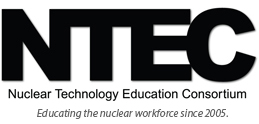N16: Chemical Aspects of Nuclear Technology
Summary
Chemical phenomena govern many processes in the nuclear fuel cycle, reflecting both the diverse chemistry of the elements involved, and also the chemical effects of ionising radiation. This course unit summarises key aspects of chemistry in the nuclear fuel cycle. It assumes very limited knowledge of chemistry and will begin with a description of key chemical concepts, before exploring their relevance to different aspects of nuclear energy, specifically the chemistry of the fission and fusion fuel cycles; the chemical effects of ionising radiation in solid and solution states; chemistry of radioelements in natural and engineered environments; chemistry of light water reactors; and analytical and forensic radiochemistry. The course unit will comprise pre-learning material, complemented with workshops, Q&A sessions and lectures, demonstrations and lab exercises.
On completion, students should be able to:
- recall and explain relevant concepts and principles of the chemistry of the solid and solution states
- apply these principles to chemical phenomena in a range of nuclear systems
- apply the chemical techniques used in environmental and analytical radiochemistry
- synthesise, analyse and interpret example chemical and radiochemical data from nuclear systems
Syllabus
- Day 1 Introduction to Key Chemical and Physical Principles (Sarah Heath). Oxidation states, ions in solution, hydrolysis and complexation. Kinetic and thermodynamic control, solubility and precipitation. Equilibrium constants. Salient features of radioactivity and detection.
- Day 2 ½ day on Source Terms and Chemistry of the Fission and Fusion Fuel Cycles (Francis Livens) Chemistry of uranium extraction, enrichment, spent fuel recycle; tritium production and processing; ½ day on Radiation Chemistry (Fred Currell, Alex Baidak, External TBC*). Free radical chemistry, linear energy transfer, radiation tracks. Radiolysis of water. Case study: PVC behaviour in Pu cans.
- Day 3. Environmental Radiochemistry (Francis Livens, Kath Morris, Liam Abrahamsen-Mills*). Sources of natural and artificial radioactivity. Chemistry of natural and engineered environments- clays, hydrous oxides, natural organic matter. Ion exchange and surface complexation processes. Colloids and nanoparticles. X-ray absorption and electron microscopic characterisation. Case study: Legacy Ponds & Silos
- Day 4. PWR Coolant Chemistry (Fabio Scenini, Nick Jones*). Chemistry control during normal operations. Effects of chemistry on generation and transport of radioactivity. Influence of operating chemistry on materials selection, degradation and performance. Startup and shutdown chemistry.
- Day 5 Analytical and Forensic Radiochemistry (Francis Livens, Sarah Heath, Olivia Marsden*) Gross counting techniques, radiochemical separation, alpha and beta counting, environmental gamma spectrometry, atom counting techniques. Nuclear forensics- intrinsic and extrinsic properties, elemental and isotopic fingerprinting. Case studies: Heisenberg Cube; Operation Whimbrel
